-
01/01/2018
Declínio da mortalidade por câncer cervical
Revista Brasileira de Enfermagem. 2018;71:585-590
Resumen
Declínio da mortalidade por câncer cervical
Revista Brasileira de Enfermagem. 2018;71:585-590
DOI 10.1590/0034-7167-2016-0530
Visualizações0Ver maisRESUMEN
Objetivo:
Describir la ocurrencia de mortalidad por cáncer cervical en Recife (PE), en el noreste de Brasil.
Método:
Este fue un estudio ecológico de series temporales que utilizó datos del Sistema de Información de Mortalidad (SIM) sobre el número total de muertes por cáncer cervical (C53 ICD10) ocurridas entre 2000 y 2012.
Resultados:
Se observó que el riesgo de muerte por esta forma de cáncer fue mayor entre las mujeres mayores de 60 años, las de color de piel mixto (53.24%), las que sólo trabajaban en casa (63.16%) y las que no tenían pareja (44.32%).
Conclusión:
Se requieren esfuerzos adicionales para mantener los programas de detección precoz y educación sanitaria y para utilizar estrategias terapéuticas de mayor eficacia, ya que la mortalidad por esta forma de cáncer se considera evitable cuando se diagnostica tempranamente.
-
PESQUISA01/01/2018
Adhesion to patient safety protocols in emergency care units
Revista Brasileira de Enfermagem. 2018;71:577-584
Resumen
PESQUISAAdhesion to patient safety protocols in emergency care units
Revista Brasileira de Enfermagem. 2018;71:577-584
DOI 10.1590/0034-7167-2017-0504
Visualizações0Ver maisABSTRACT
Objective:
To investigate compliance of national patient safety protocols in Emergency Care Units (UPA) of the Paraná State.
Method:
From April until September 2016, the exploratory stage of the action research was conducted on stratified sampling with 377 patients of eight units, with use of verification instrument of basic safety actions.
Results:
The absence of systematic identification of patients, fall risk assessment and signaling and development of pressure injuries were evidenced. We observed that 52.8% of parenteral solutions in use were not identified and that, in only 29.4% of the cases, the allergic condition was investigated. In 80.6% of the emergency units there was availability of alcoholic solution to hand hygiene.
Conclusion:
We concluded that the non-compliance of basic actions concerning patient safety exposes users to preventable adverse events and demands systematized actions to comply with government guidelines and promote quality of health assistance.
-
PESQUISA01/01/2018
Epidemiological overview of HIV/AIDS in pregnant women from a state of northeastern Brazil
Revista Brasileira de Enfermagem. 2018;71:568-576
Resumen
PESQUISAEpidemiological overview of HIV/AIDS in pregnant women from a state of northeastern Brazil
Revista Brasileira de Enfermagem. 2018;71:568-576
DOI 10.1590/0034-7167-2017-0495
Visualizações0Ver maisABSTRACT
Objective:
To learn the epidemiological characteristics of HIV infection in pregnant women.
Method:
Descriptive study with quantitative approach. The study population was composed of pregnant women with HIV/AIDS residing in the state of Alagoas. Data were organized into variables and analyzed according to the measures of dispersion parameter relevant to the arithmetic mean and standard deviation (X ± S).
Results:
Between 2007 and 2015, 773 cases of HIV/AIDS were recorded in pregnant women in Alagoas. The studied variables identified that most of these pregnant women were young, had low levels of education and faced socioeconomic vulnerability.
Conclusion:
It is necessary to include actions aimed at increasing the attention paid to women, once the assurance of full care and early diagnosis of HIV are important strategies to promote adequate treatment adherence and reduce the vertical transmission.
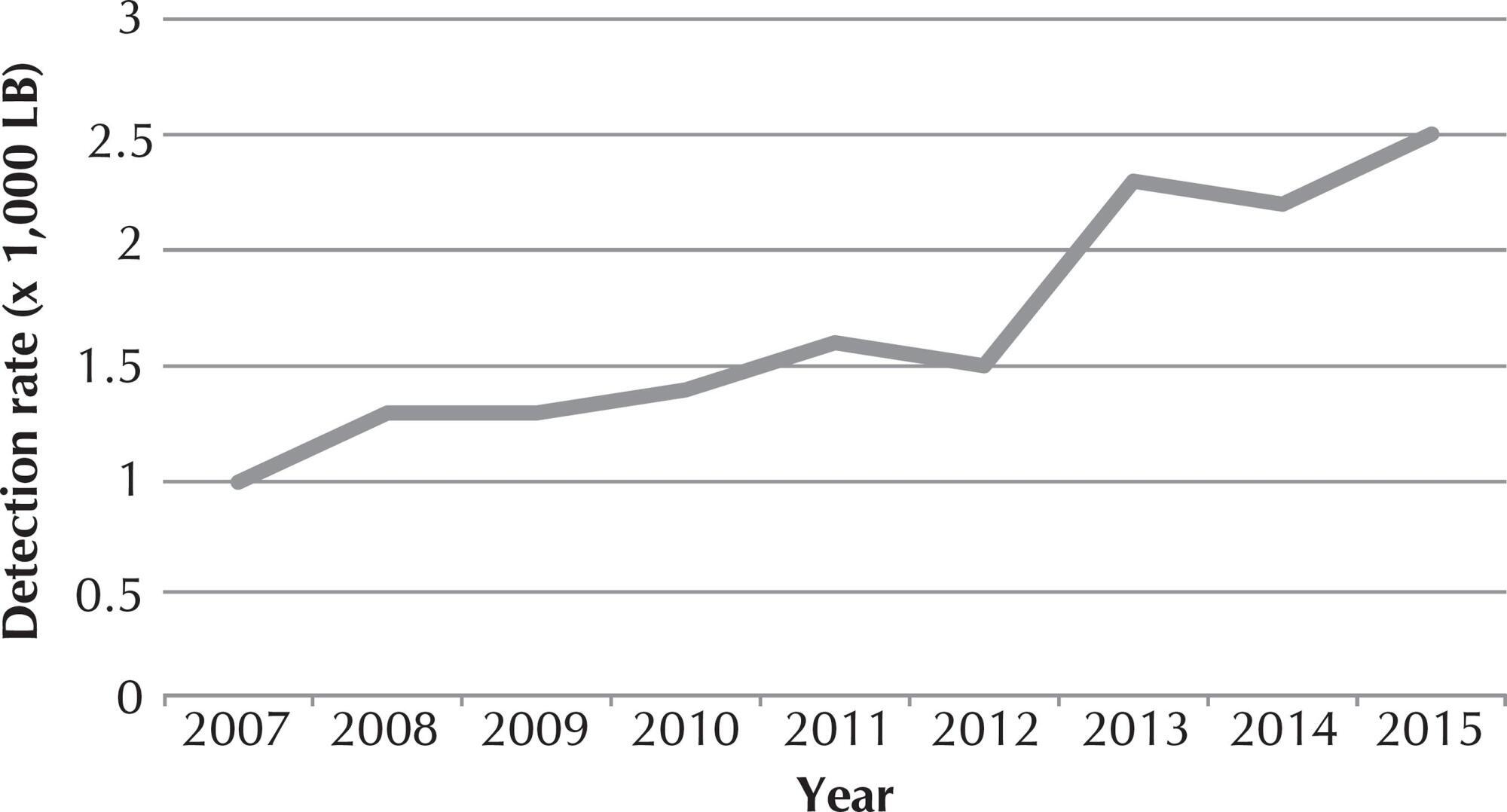
-
PESQUISA01/01/2018
Hand hygiene management among nurses: collective health challenges
Revista Brasileira de Enfermagem. 2018;71:562-567
Resumen
PESQUISAHand hygiene management among nurses: collective health challenges
Revista Brasileira de Enfermagem. 2018;71:562-567
DOI 10.1590/0034-7167-2017-0538
Visualizações0Ver maisABSTRACT
Objective:
To describe the determining factors in hand hygiene management among nurses and identify associated collective health challenges.
Method:
Cross-sectional descriptive study. Data were collected using a questionnaire that was applied in four internal medicine units of a hospital of reference in Portugal.
Results:
The sample was composed of 50 nurses aged 26 to 55 years (mean age of 34.88 years); 80% were women, 58% had a Bachelor’s degree, and had 5-30 years of nursing practice (X̄ =11.94;±5.92). The vast majority of nurses (90%) reported complying with the existing recommendations on hand hygiene in pre-established moments. However, none of the nurses were able to identify all the moments for hand hygiene using water and soap or alcohol-based handrub.
Conclusion:
This study shows that continuous training, adequate materials/structures in the units, and redesigned administration/supervision practices are determining factors to achieve higher levels of adherence to hand hygiene among nurses, as well as increased quality and safety in care delivery, which is a current collective health challenge.
-
PESQUISA01/01/2018
How do old men take care of their own health in Primary Care?
Revista Brasileira de Enfermagem. 2018;71:554-561
Resumen
PESQUISAHow do old men take care of their own health in Primary Care?
Revista Brasileira de Enfermagem. 2018;71:554-561
DOI 10.1590/0034-7167-2017-0131
Visualizações0Ver maisABSTRACT
Objective:
To understand the care of elderly men with their own health.
Method:
A qualitative study with the participation of ten elderly men, through responses to the semi-structured interview guided by the “Tell me about your experiences of care with your health”, carried out in a basic health unit, during the period of October-December 2014. The speeches, after being transcribed were submitted to content analysis.
Results:
The ten interviewees were retired and had an average age of 67.3 years. From the analysis of the data, two categories have emerged: Elderly health care ways and health service as a supporter in the care (less) of the elderly, which revealed the restriction of health care to the triad: medicines, consultation to professionals and exams.
Final considerations:
Institutional and sociocultural barriers that need to be overcome so that the male population can be consolidated, guaranteeing care of their peculiarities, encouraging active behaviors for self-care.
-
PESQUISA01/01/2018
Nurse liaison: a strategy for counter-referral
Revista Brasileira de Enfermagem. 2018;71:546-553
Resumen
PESQUISANurse liaison: a strategy for counter-referral
Revista Brasileira de Enfermagem. 2018;71:546-553
DOI 10.1590/0034-7167-2017-0490
Visualizações0Ver maisABSTRACT
Objective:
to identify the profile of the counter-referred patients by the “nurse liaison” and to describe the experience of the professionals who participated in the project.
Method:
intervention research, with twelve nursing nurses from a hospital and an Emergency Care Unit, and 26 nurses from Primary Health Care. Data were obtained through questionnaires and counter-referral forms.
Results:
Out of 43 counter-referred individuals, 62.8% are over sixty years, 53.5% are men with multi-pathologies. Among the positive aspects, the nurses highlighted the dialogue between health care services, agility in the acquisition of inputs for the continuity of care in primary care, benefiting patients after hospital discharge. The greatest challenge was the lack of time and the deficit of nurses to perform the function.
Final considerations:
the presence of the “nurse liaison” has proved to be an important strategy to improve integration between services and to promote continuity of care.
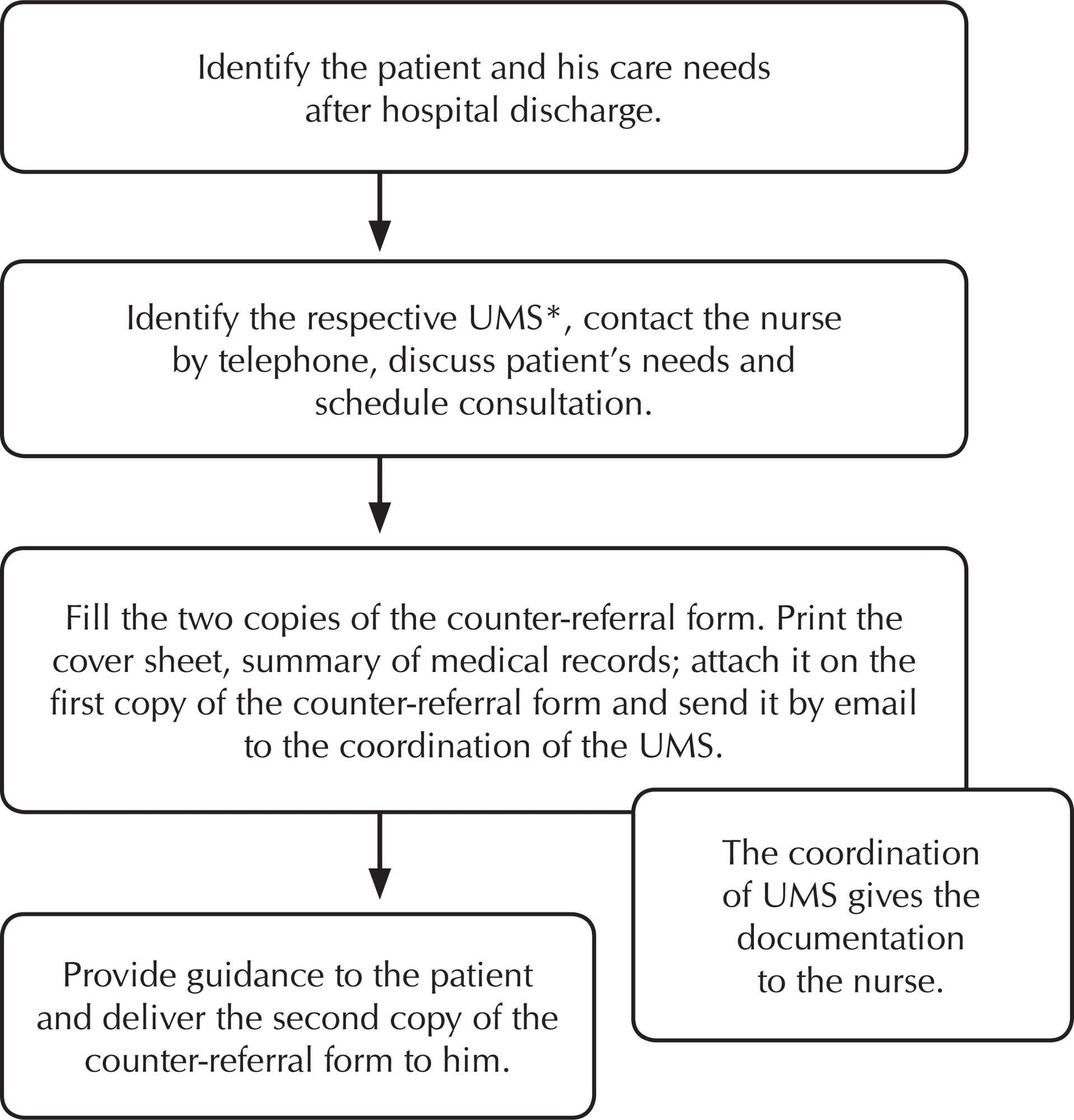
-
PESQUISA01/01/2018
Depression in the wives of convicted men: prevalence and associated factors
Revista Brasileira de Enfermagem. 2018;71:538-545
Resumen
PESQUISADepression in the wives of convicted men: prevalence and associated factors
Revista Brasileira de Enfermagem. 2018;71:538-545
DOI 10.1590/0034-7167-2017-0263
Visualizações0Ver maisABSTRACT
Objective:
To estimate the prevalence of depression and to identify the main risk factors associated with depression in wives of convicted men.
Method:
Descriptive, cross – sectional, quantitative approach. The data were collected with 349 female partners of convicted patients in three penitentiaries in the state of Paraná, with a semistructured research, between January and June of 2016, being compiled in a database and analyzed using SPSS® 20.0 software.
Results:
It was possible to identify vulnerability to depression among wives of convicted men, most were young and 42.2% have or already had depression. It was verified that the variables to depression were ages equal to or above 30 years (50.3%, p <0.001), smoking (61.1%, p <0.013) and alcoholism (16.1%, p <0.001).
Conclusion:
It is the responsibility of the nurse with the multidisciplinary health team to invest in health promotion and prevention actions against these risk factors that were associated with depression in this population.
-
01/01/2018
Primary health care: the experience of nurses
Revista Brasileira de Enfermagem. 2018;71:531-537
Resumen
Primary health care: the experience of nurses
Revista Brasileira de Enfermagem. 2018;71:531-537
DOI 10.1590/0034-7167-2016-0244
Visualizações0ABSTRACT
Objective:
to understand the meaning of nursing care in primary health care from the perspective of Chilean nurses.
Method:
this was a qualitative study based on the social phenomenology of Alfred Schutz. Data was collected between January and April 2013, through interviews with 13 primary health care nurses in Chile.
Results:
the nurses perceived primary care as a gratifying experience, considering it an encounter of subjectivities. However, they felt burdened with multiple functions and by the hierarchical pressure to achieve targets. They strived to implement innovative care, expressed by the desire to go beyond traditional care practices, and improve the efficiency of management at the various levels of health care.
Conclusion:
it is important to discuss the results of the present study in the context of health care and especially nursing education, with the goal of better preparing nurses who will deliver care at the primary health care level.
Palavras-chave: Family Nurse PractitionersNursing CarePractical NursingPrimary Health CareQualitative ResearchVer mais
-
14/04/2021
Child behavior during the social distancing in the COVID-19 pandemic
Revista Brasileira de Enfermagem. 2021;74:e20200762
Resumen
Child behavior during the social distancing in the COVID-19 pandemic
Revista Brasileira de Enfermagem. 2021;74:e20200762
DOI 10.1590/0034-7167-2020-0762
Visualizações0Ver maisABSTRACT
Objective:
To describe the daily activities performed by children from 6 to 12 years of age incomplete and analyze children’s behavior during social distancing in the face of the COVID-19 pandemic.
Methods:
Cross-sectional study with children in a learning stage living in Brazil. The data were collected via online form. Fisher’s exact test was applied to analyze the association of categorical variables with child behavior; when significant, it was used the odds ratio. It was considered results considered statistically significant those presenting values of p < 0.05.
Results:
Data from 530 children were analyzed: 50.3% female, 71.3% from the Southeast Region, 73% in fulltime social distancing, 52% presented anxiety, which was significantly associated with changes in sleep and appetite.
Conclusion:
The results indicate the need for parents/caretakers to stimulate moments for the child to express themselves, not minimizing their feelings and providing emotional support to mitigate the negative impact of these feelings on the child’s mental and physical health.
-
05/12/2019
Hospital care and urinary incontinence in the elderly
Revista Brasileira de Enfermagem. 2019;72:284-293
Resumen
Hospital care and urinary incontinence in the elderly
Revista Brasileira de Enfermagem. 2019;72:284-293
DOI 10.1590/0034-7167-2018-0273
Visualizações0Ver maisABSTRACT
Objective:
to identify factors inherent in hospital care that favor urinary incontinence in the elderly.
Method:
an integrative review with Scopus, CINAHL and Pubmed searches. Includes original articles, no language restriction, published between 2008 and 2018. Rated level of recommendation and level of evidence were assessed using the Oxford Center for Evidence-Based Medicine classification. Exploited content through thematic analysis in light of the Donabedian model.
Results:
13 articles constituted the sample. There were factors such as the unjustified and indiscriminate use of devices such as the geriatric diaper; hospital structure adversely affecting the needs of the elderly; and deficit in screening, risk identification and underreporting of the problem favor urinary incontinence in the hospitalized elderly.
Conclusion:
modifiable factors related to hospital structures and care processes favor both the onset and worsening of urinary incontinence in the elderly.
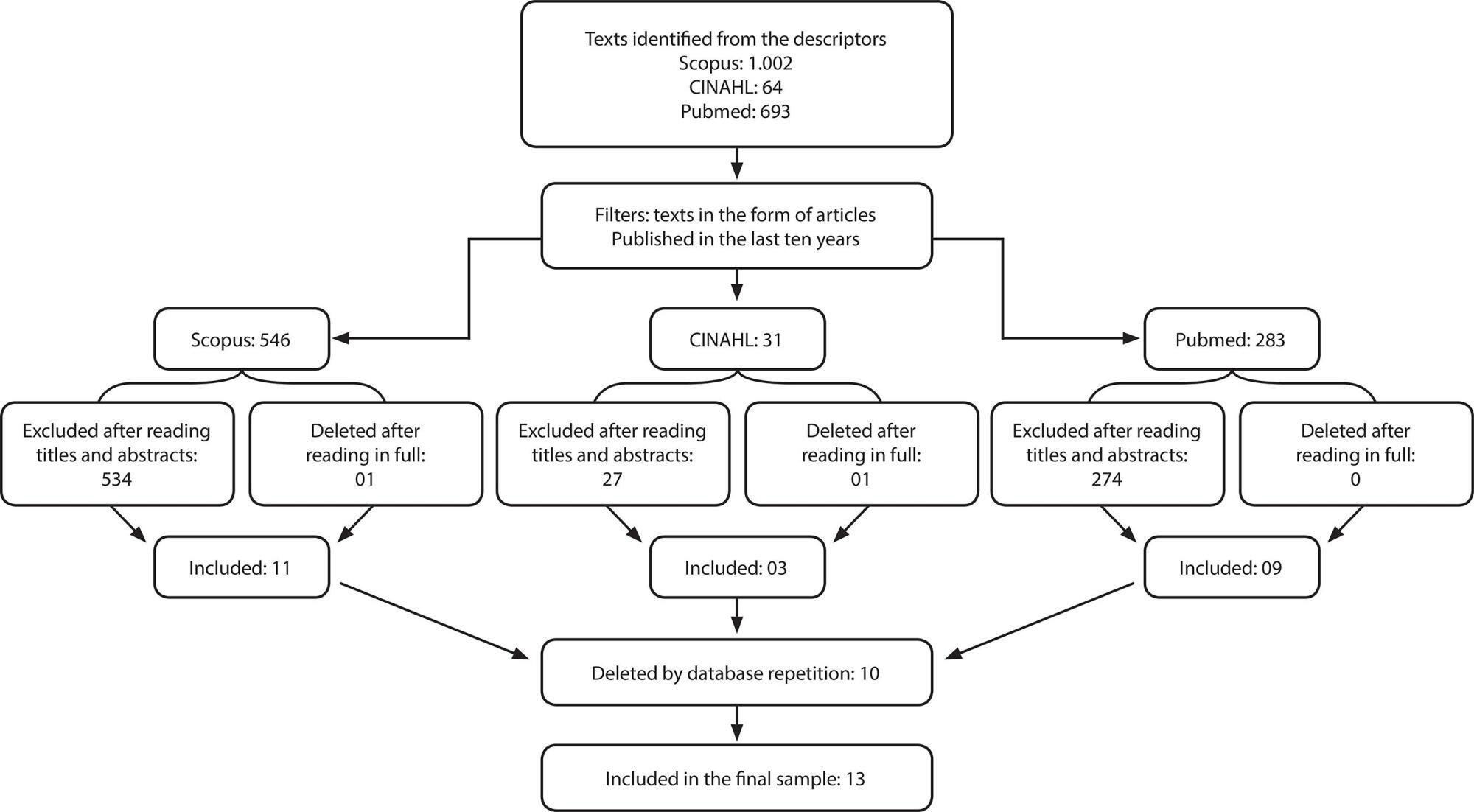
-
ARTÍCULO ORIGINAL21/10/2019
Hipermídia educativa sobre assistência de enfermagem ao parto: construção e validação de conteúdo e aparência
Revista Brasileira de Enfermagem. 2019;72(6):1471-1478
Resumen
ARTÍCULO ORIGINALHipermídia educativa sobre assistência de enfermagem ao parto: construção e validação de conteúdo e aparência
Revista Brasileira de Enfermagem. 2019;72(6):1471-1478
DOI 10.1590/0034-7167/2018-0163
Visualizações1Ver maisRESUMO
Objetivo:
construir uma hipermídia educativa sobre a assistência de enfermagem ao parto de risco habitual e realizar a validação de conteúdo e de aparência.
Método:
pesquisa metodológica, realizada seguindo as seguintes etapas: levantamento do conteúdo e planejamento dos módulos; produção das mídias e organização das unidades tutoriais; organização do espaço do aluno, tutor e de comunicação entre eles; elaboração da hipermídia; disponibilização da hipermídia; avaliação por especialistas em Enfermagem e Informática; e implementação das sugestões propostas.
Resultados:
a hipermídia educativa mostrou-se como um material validado, visto que apresentou um ótimo índice de validade de conteúdo global de 0,97 e significância estatística no teste binomial para o conteúdo e aparência.
Conclusão:
acredita-se que o uso deste material com alunos da graduação em Enfermagem contribuirá com a qualidade da assistência obstétrica, tendo em vista que se constitui em uma tecnologia ilustrada capaz de favorecer o ensino-aprendizagem sobre parto normal humanizado.
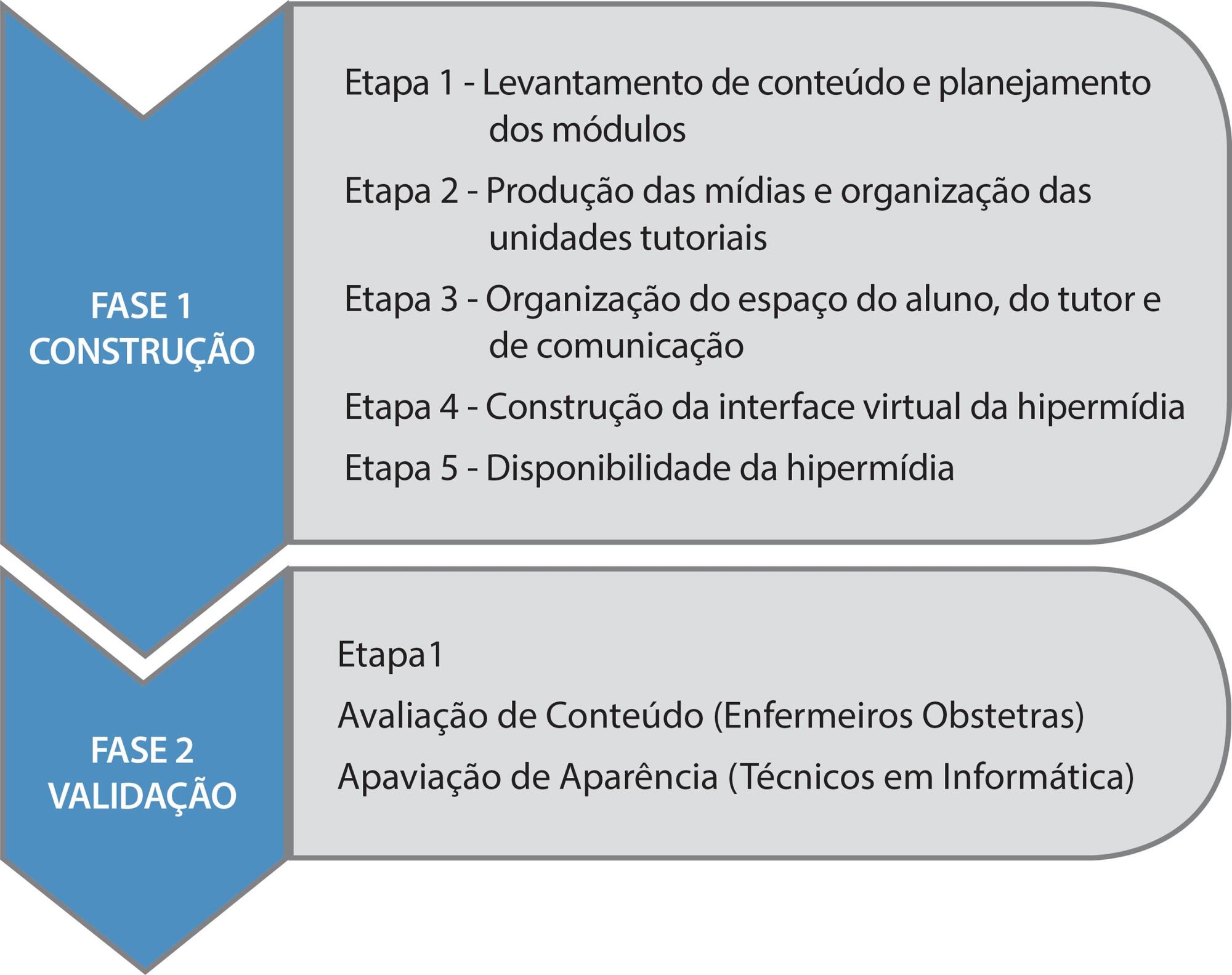
-
ARTÍCULO ORIGINAL30/03/2020
Boas Práticas de segurança nos cuidados de enfermagem em Terapia Intensiva Neonatal
Revista Brasileira de Enfermagem. 2020;73(2):e20180482
Resumen
ARTÍCULO ORIGINALBoas Práticas de segurança nos cuidados de enfermagem em Terapia Intensiva Neonatal
Revista Brasileira de Enfermagem. 2020;73(2):e20180482
DOI 10.1590/0034-7167-2018-0482
Visualizações0RESUMO
Objetivos:
identificar a percepção dos profissionais de enfermagem sobre o erro humano nos cuidados de enfermagem na Unidade de Terapia Intensiva Neonatal; analisar as estratégias de Boas Práticas propostas por esses profissionais para a segurança do paciente nos cuidados de enfermagem.
Métodos:
estudo quanti-qualitativo, descritivo. Cenário: Unidade de Terapia Intensiva Neonatal. Participantes: 22 profissionais de enfermagem. Coleta dos dados realizada por meio de entrevistas e submetidos a análise temática.
Resultados:
erro humano nos cuidados de enfermagem, identificando-se perdas de cateteres e erros no processo de medicação; causas para o erro nos cuidados de enfermagem, destacando-se a sobrecarga de trabalho; Boas Práticas para a segurança do paciente nos cuidados de enfermagem, como capacitação profissional e melhorias das condições de trabalho.
Conclusões:
demonstra-se a importância de investir em estratégias de Boas Práticas para a Segurança do Paciente, buscando-se sedimentar a cultura de segurança organizacional e estimular um ambiente propício ao gerenciamento do erro.
Palavras-chave: EnfermagemErros MédicosGestão de SegurançaSegurança do PacienteUnidades de Terapia Intensiva NeonatalVer mais -
ARTÍCULO DE REVISIÓN29/09/2022
Nursing students’ learning from involvement in research projects: an integrative literature review
Revista Brasileira de Enfermagem. 2022;75(1):e20210053
Resumen
ARTÍCULO DE REVISIÓNNursing students’ learning from involvement in research projects: an integrative literature review
Revista Brasileira de Enfermagem. 2022;75(1):e20210053
DOI 10.1590/0034-7167-2021-0053
Visualizações0Ver maisABSTRACT
Objective:
To identify the learning outcomes and skills obtained of undergraduate nursing students involved in research projects.
Methods:
This was an integrative literature review, based on a research protocol in the CINAHL Complete databases; Cochrane Central Register of Controlled Trials; Cochrane Database of Systematic Reviews; Cochrane Methodology Register; MedicLatina; MEDLINE, Scopus and JBI, including primary and secondary studies, published between 2015 and 2020.
Results:
A total of five heterogeneous articles were included, which were categorized using Kirkpatrick’s (adapted) model. Seventeen learning outcomes acquired through participation in research projects were identified, from the learning of new knowledge and skills to the development of new attitudes and behaviors.
Final considerations:
The involvement of nursing students in research projects is important to their professional development. Future investment in research on this topic can help cement the potential of this type of student involvement.
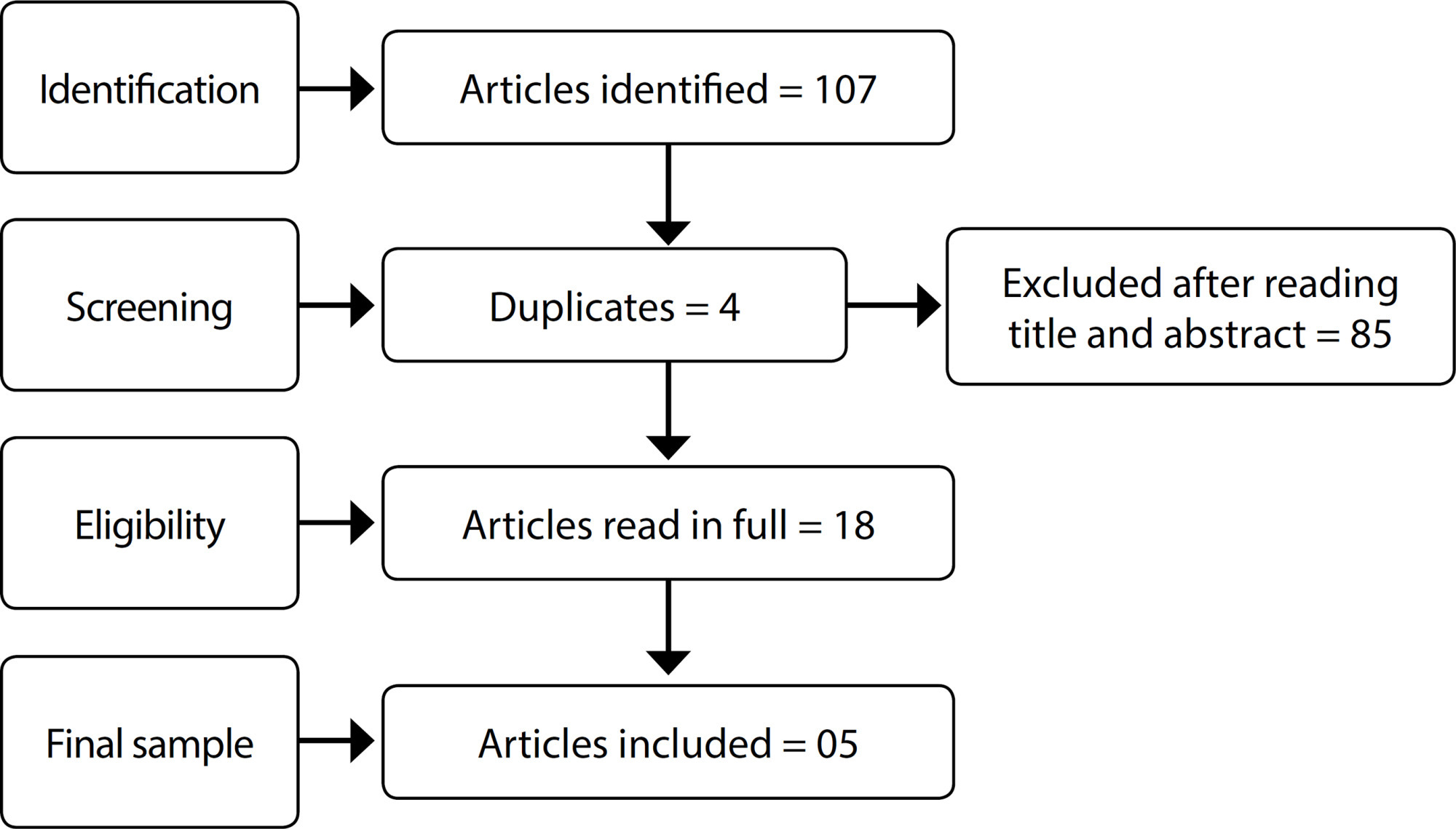
-
ARTÍCULO ORIGINAL05/12/2019
Qualidade de vida relacionada à saúde em pacientes com insuficiência cardíaca
Revista Brasileira de Enfermagem. 2019;72:140-146
Resumen
ARTÍCULO ORIGINALQualidade de vida relacionada à saúde em pacientes com insuficiência cardíaca
Revista Brasileira de Enfermagem. 2019;72:140-146
DOI 10.1590/0034-7167-2018-0368
Visualizações1RESUMO
Objetivo:
Avaliar a qualidade de vida relacionada à saúde dos pacientes com insuficiência cardíaca e relacionar aos dados sociodemográficos e clínicos.
Método:
Trata-se de estudo observacional, de corte transversal, com abordagem quantitativa realizado em ambulatório de insuficiência cardíaca no estado de Pernambuco.
Resultados:
Na amostra (n=101) houve predominância de homens, maiores de 60 anos, casados, profissionalmente inativos. A qualidade de vida relacionada à saúde, a partir do questionário Minnesota Living With Heart Failure Questionnaire foi considerada moderada (34,3±21,6), apresentando relação significativa com idade (p=0,004), classe funcional (p<0,001) e em pacientes com cardiopatia chagásica (p=0,02).
Conclusão:
A qualidade de vida no grupo IC de etiologia chagásica esteve mais comprometida, especialmente na dimensão emocional. Sugere-se a realização de estudos abordando as hipóteses de que maior tempo de acompanhamento ambulatorial melhora a qualidade de vida e que ter doença de Chagas interfere negativamente na qualidade de vida de pacientes com insuficiência cardíaca.
Palavras-chave: Assistência AmbulatorialDoença de ChagasEnfermagemInsuficiência CardíacaQualidade de VidaVer mais -
ARTÍCULO DE REVISIÓN21/12/2020
Aplicação da metodologia Lean Seis Sigma nos cenários de assistência à saúde: revisão integrativa
Revista Brasileira de Enfermagem. 2020;73:e20190861
Resumen
ARTÍCULO DE REVISIÓNAplicação da metodologia Lean Seis Sigma nos cenários de assistência à saúde: revisão integrativa
Revista Brasileira de Enfermagem. 2020;73:e20190861
DOI 10.1590/0034-7167-2019-0861
Visualizações0RESUMO
Objetivo:
analisar a produção científica sobre os resultados da metodologia Lean Six Sigma nas instituições de assistência à saúde.
Métodos:
revisão integrativa da literatura, com a seguinte pergunta: quais são os resultados nas instituições de saúde com a utilização da metodologia Lean Six Sigma e Six Sigma? A busca foi realizada nas bases de dados MEDLINE, LILACS, BDENF, CINAHL, Web of Science e Scopus, sem recorte temporal.
Resultados:
foram incluídos 34 artigos, publicados entre 2005 e 2019, sendo 52,9% provenientes dos Estados Unidos da América. As melhorias mais comumente encontradas foram em instituições hospitalares e na perspectiva dos clientes e processos internos.
Conclusão:
a utilização da metodologia Lean Six Sigma se demonstrou eficaz nos diversos cenários de assistência à saúde, se destacando uma lacuna em sua aplicação quanto ao engajamento e capacitação de pessoas.
Palavras-chave: Administração em SaúdeAssistência à SaúdeControle de QualidadeGestão da Qualidade TotalMelhoria de QualidadeVer mais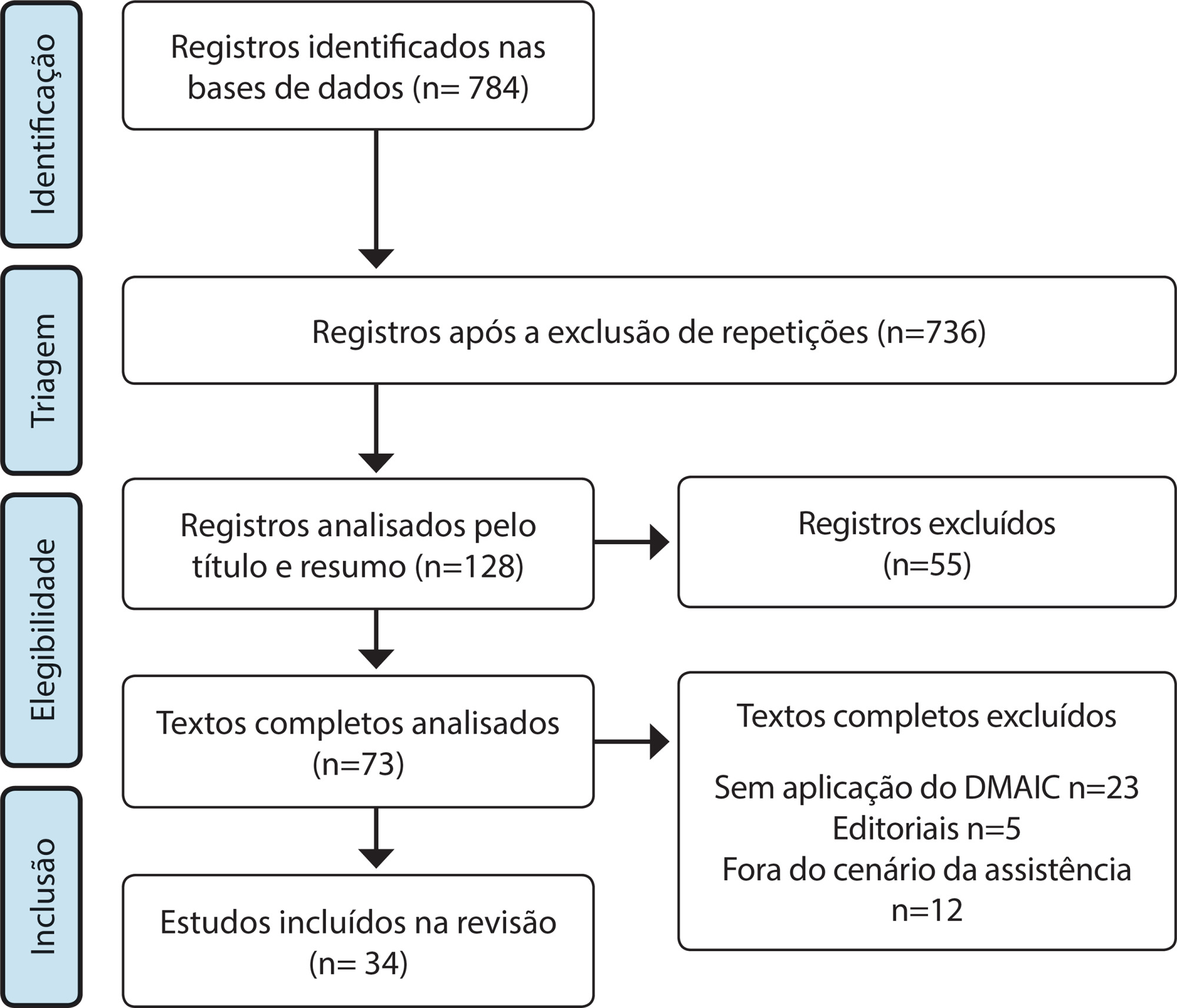
-
ARTÍCULO ORIGINAL17/02/2020
Análise dos registros de técnicos de enfermagem e enfermeiros em prontuários
Revista Brasileira de Enfermagem. 2020;73(2):e20180542
Resumen
ARTÍCULO ORIGINALAnálise dos registros de técnicos de enfermagem e enfermeiros em prontuários
Revista Brasileira de Enfermagem. 2020;73(2):e20180542
DOI 10.1590/0034-7167-2018-0542
Visualizações0RESUMO
Objetivos:
analisar as principais não conformidades dos registros de enfermagem de um hospital público do Nordeste na cidade de Natal.
Métodos:
estudo descritivo, transversal, abordagem quantitativa. Realizado em enfermarias médicas e cirúrgicas. Amostra composta de 120 prontuários de pacientes internados entre outubro e dezembro de 2016. Os dados obtidos foram tabulados e analisados por estatística simples em frequência absoluta e relativa com o software Microsoft Excel 2013. Para avaliar as não conformidades dos registros, usou-se o Diagrama de Pareto.
Resultados:
como principais problemas nos registros de enfermagem, destacou-se a ausência da categoria profissional e número do conselho, responsáveis por 41,8% das não conformidades nos registros de técnicos de enfermagem, enquanto nas anotações dos enfermeiros foram a ausência de hora e as letras ilegíveis, com 61,2%.
Conclusões:
o estudo evidenciou que os profissionais de enfermagem realizam seus registros de forma incompleta e que muitas vezes não documentam o cuidado prestado.
Palavras-chave: ComunicaçãoEnfermagemPesquisa sobre Serviços de SaúdeRegistros de EnfermagemSegurança do PacienteVer mais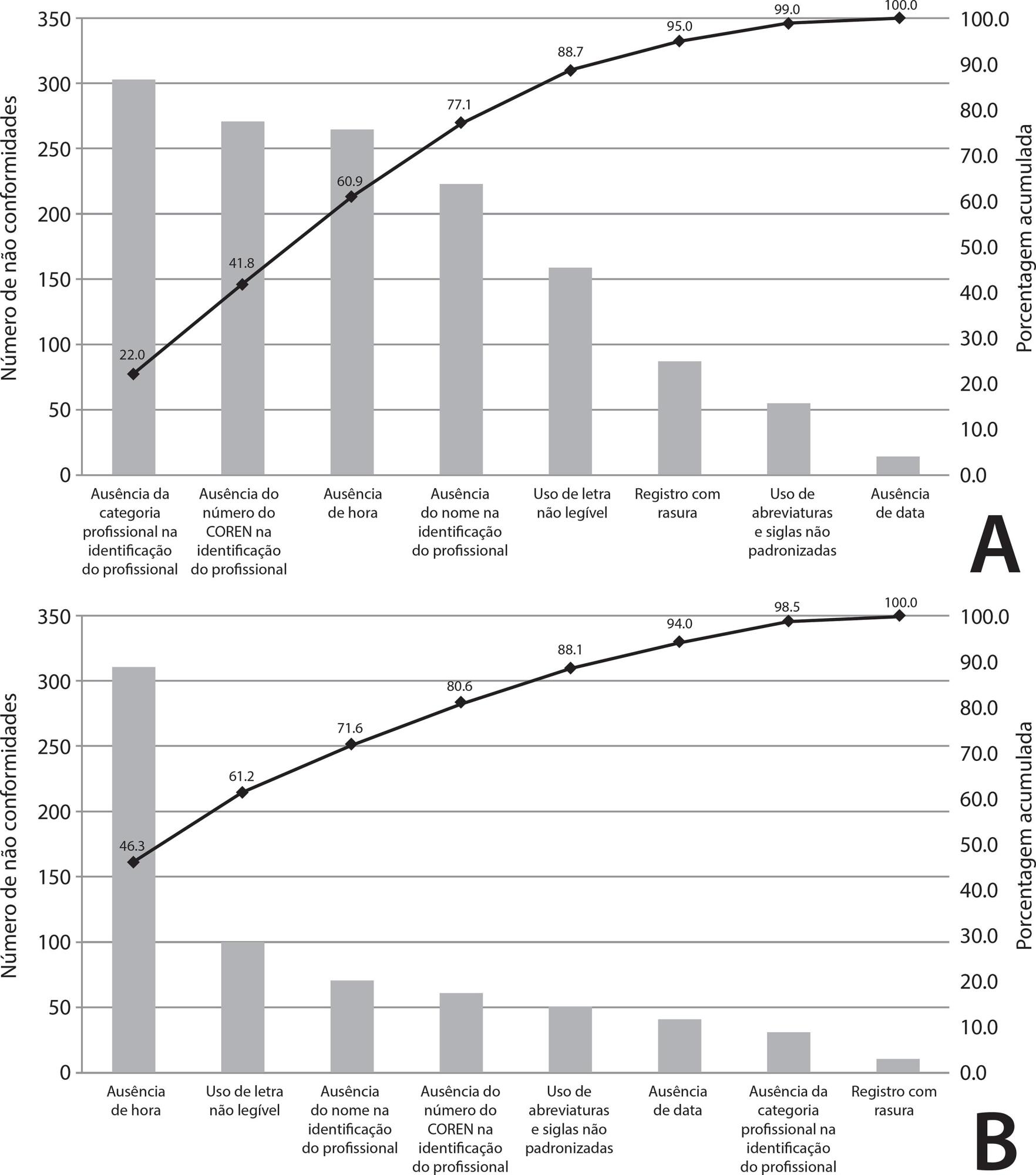
Búsqueda
Buscar en:
Nuvem de Tags
Adolescente (85) Atenção Primária à Saúde (239) COVID-19 (91) Criança (91) Cuidados de Enfermagem (269) Educação em Enfermagem (151) Educação em Saúde (139) Enfermagem (930) Enfermagem Pediátrica (86) Estudantes de Enfermagem (77) Estudos de Validação (131) Família (87) Idoso (208) Promoção da Saúde (99) Qualidade de Vida (104) Saúde do Trabalhador (86) Saúde Mental (145) Saúde Pública (82) Segurança do Paciente (150) Tecnologia Educacional (100)



